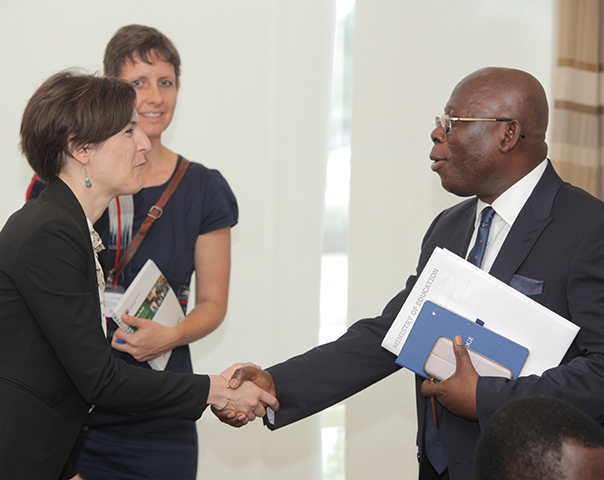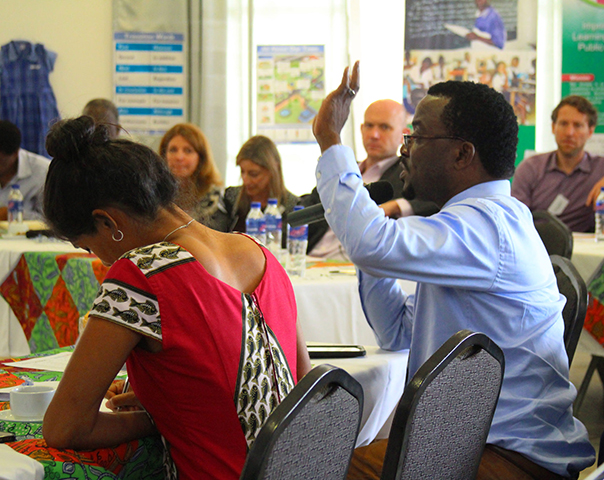Investing Where Scale Lives: Working Inside Government for Lasting Impact

Too many actors in development treat the government like a slow-moving obstacle course. They run pilots on the sidelines and hope someone notices. These workarounds miss something simple: only public systems have the reach and the duty to serve everyone.
Workarounds can generate solid evidence and innovation, but they rarely change services at scale. Why? Because they sidestep the managers, budgets, and routines that turn results into policy. If scale is the goal, the task isn’t to go around the state; it’s to improve how the state itself works.
At IPA, we’ve learned that the right question isn’t whether the government should do more or less—it’s how to help it do better. In Latin America and the Caribbean, where many public agencies already have meaningful capacity, partnering with them is the most reliable path to impact at scale.
For instance, our experience in Colombia shows that partnering with governments enables us not only to design, implement, and scale evidence-based solutions, but also to create the conditions for lasting systems change. This means embedding evidence into policy and practice in ways that are cost-effective and scalable. We believe this is how research moves beyond isolated pilots to reach entire populations, and how solutions continue to deliver impact long after projects and funding cycles end.
Government Effectiveness is the Real Question We Should Be Addressing
How can governments work better? Governments control more than 90 percent of social spending globally, while philanthropy and foreign aid account for only a small share by comparison. If organizations are serious about achieving impact at scale, they must work with and through the institutions that already carry the bulk of the responsibility and resources.
Yes, many public programs underperform. But underperformance, whether through inefficiency or ineffectiveness isn’t inevitable; it’s a solvable problem. With the right evidence, partnerships, and support, governments can and do improve their service delivery. We've seen this in practice: small, targeted investments in iterating and refining government programs can lead to better efficiency and implementation quality.
Public institutions are ultimately accountable to citizens. When organizations embed evidence inside those systems–and not around them–they help align programs with national priorities, increase ownership, and strengthen the institutions positioned to sustain progress over time.
Hence, the path forward is not bypassing or sidestepping governments, it is working together with them and building their capacity to deliver.
The “Evidence-to-Action” framework
Turning evidence into real impact takes more than a strong study. At IPA, we have developed and refined a practical toolkit for moving from research to real-world results through government systems. Here’s how it works in practice, with examples from our policy work in Colombia.
Embedded Evidence Labs: Change happens faster when organizations work from inside government institutions. Embedding teams in public institutions builds trust, aligns priorities, and accelerates the uptake of evidence. In Colombia, we’ve done this by establishing an innovation lab within the Colombian Family Welfare Institute (ICBF) — one of several labs across the country. These labs support the design, refinement, evaluation, and scaling of programs that serve children and families nationwide.
Collaborate: Lasting solutions are built, not delivered. IPA co-designs programs with government partners, combining rigorous evidence with local insights from the start. We’ve taken this approach with ICBF to strengthen early childhood interventions, with iNNpulsa (Colombia’s National Government Agency for Entrepreneurship and Innovation) to develop soft-skills curricula for entrepreneurs, and with local authorities in Medellín, such as the Secretary of Security, to inform urban safety strategies.
Test & Adapt: Using evidence is a starting point, not a final answer. Through iterative learning cycles, we refine solutions in real-world settings.
For example, in partnership with ICBF, we have iteratively refined and evaluated the impact of Sanar para Crecer, a mindfulness-based intervention for early childhood development workers, which has allowed us to improve program implementation and ensure it impacts caretaker-child interactions.
Monitor to Learn: Monitoring and evaluation shouldn’t just serve accountability; it should also support learning and adaptation. Through our Monitoring, Evaluation and Learning for governments approach, we help partners move beyond compliance-focused monitoring to build systems that use data for continuous improvement. This shift is both technical and cultural, fostering a mindset of data use for learning and decision-making.
Together, these tools help bridge the gap between research and policy—moving beyond one-off studies to build systems that learn, adapt, and deliver better outcomes at scale.
Before You Push Back, Consider This
Working with governments isn’t always easy, and it’s often misunderstood. Here are two of the most common objections we hear, and why they don’t hold up in practice:
“It’s too political”: Yes, policymaking happens in political spaces, but evidence can play a powerful role in grounding public decisions in facts. Evidence does not end politics. It narrows the argument, sets guardrails, and buys permission for action across factions. Evidence can turn a fight over ideology into a negotiation over trade-offs. Data is not a magic bridge across polarization, but in moments of crisis or reform, rigorous data can reduce the space for bad guesses.
A strong example is Ingreso Solidario, Colombia’s emergency cash transfer program launched during the COVID-19 pandemic.
Evidence from existing studies helped make informed decisions on its continuity, enabling policymakers to move quickly, transparently, and effectively, even in a highly charged environment.
“Pilots never scale”: Many pilot programs indeed fail to scale, but this is because the interventions weren’t built to scale in the first place. When pilots are co-designed with the government, aligned with existing delivery systems, and tested under real-world constraints, they have a much higher chance of expanding. In our experience, programs with public ownership from day one, like Sanar para Crecer or early childhood initiatives with ICBF, are far more likely to grow and endure.
Partnering for Scale: A Field Note to Funders
We need to foster the conditions for scale inside government—not just the next good idea. Pilots belong in this story too, as on-ramps within public systems, not stand-alone side projects.
Investing in systems change pays off: Support government capacity by funding a small evidence-use unit inside public organizations whose job is to help program owners make evidence-informed decisions every week. Make running pilots part of institutional learning by conducting them through public channels, using administrative data, and designing them to update manuals, training, and budget rules if they work. Sanar para Crecer in Colombia is a proof of concept for how the system learns iteratively, not a one-off. Support the full learning cycle through problem framing, rapid evidence scans, test–measure–adapt sprints, and structured after-action reviews, and make those loops routine, not exceptional.
Redefine Success: Judge Progress at the System Level. Did teams use evidence to improve feasibility, efficiency, and effectiveness—and how did that affect overall cost-effectiveness? True success means valuing informed course corrections and rewarding programs that adapt or stop for good reasons, not just those that persist unchanged. Require brief decision notes to make choices transparent and create a learning trail for future teams. Look beyond counts to capabilities: Has your organization developed systematic evidence reviews, a standard playbook for rapid tests, reliable data sharing across units, and knowledge continuity despite staff changes? Most importantly, keep pilots connected to the broader system. Success isn't producing a paper or report—it's when a pilot shapes guidelines, training, budgets, and procurement, transforming practice into policy.












